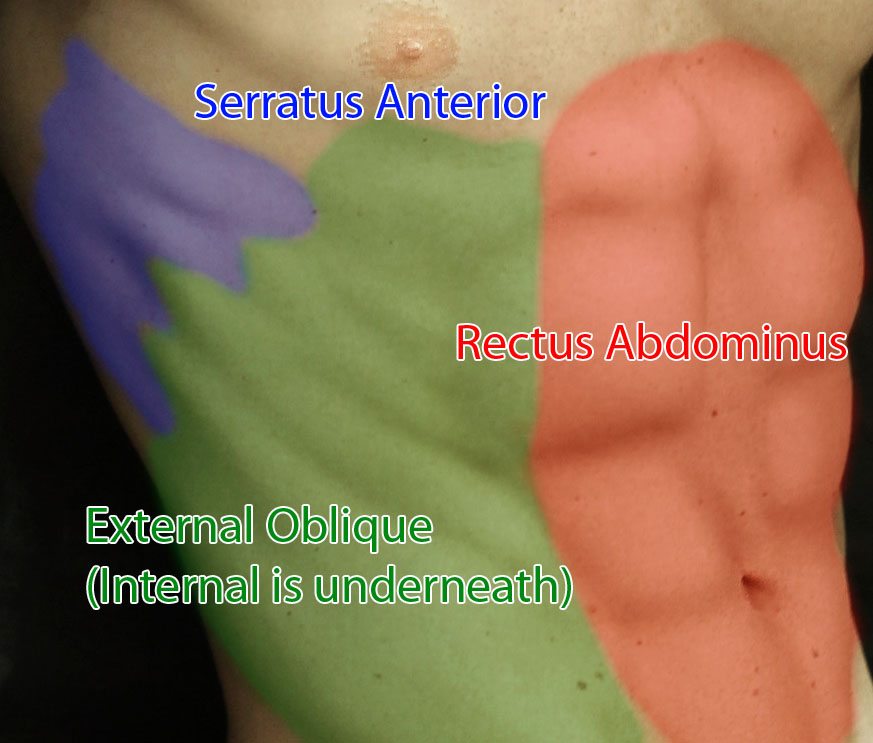Breathing is something we do all the time, often without being aware of it however, when we do, many muscles are actually working together.
Before we start, it is important to keep in mind that there are two types of breathing: forced and at rest.
When at rest, you don’t breathe all the way in or all the way out. When you breathe on purpose such as when you sing or take a deep breath, or when you need to breathe more forcefully such as in a running race, this is forced.
Breathing in (Inspiration)
At rest, the main muscle the controls inspiration is the diaphragm, a large, flat muscle that covers the bottom of your ribcage. When you inspire, the diaphragm contracts, pulling downwards and stretching your lungs. It is helped by the external intercostals; the outer layer of muscles that sit between your ribs. These muscles pull upwards and outwards, expanding your chest.
Then you are breathing in forcefully, there are other muscles that become involved. Serratus Anterior is attached to the ribs and it pulls the shoulder blade forward to help your lungs expand more. There are also many muscles in the neck that help open the airways to allow more air in at once.
Breathing out (Expiration)
At rest, expiration is passive. Everything relaxes and the natural elasticity of the lung causes it to go back to its original size. The diaphragm and all the other muscles just relax, that’s all there is to it 😉
But wait, what about forced expiration? The diaphragm can only move one way when it contracts (downwards) so what helps us to breathe out when we have to take control?
The answer is in our abdominal muscles (Internal and external obliques, transversalis abdominus and, rectus abdominus). When these muscles contract they increase intra-abdominal pressure. This causes our abdominal contents to press upwards on the diaphragm, causing the air to be pushed out of the lungs.
Alveolar Pressure
The changes in alveolar pressure during inspiration and expiration can be explained by Boyle’s Law.
P1 * V1 = P2 * V2
Boyle’s law basically means that in a fixed amount of gas, a change in volume will result in a proportionate change in pressure.
When you inspire (breathe in), the volume of the alveoli increases due to the stretching of lung tissue. This means that the pressure in the alveoli will drop, creating a pressure gradient. This causes more air to be drawn into the lungs in order to bring the alveolar pressure to atmospheric pressure.
The opposite happens when you expire, the volume of the alveoli decreases, the pressure increases causing air to be pushed out of the lungs.
Here is a great animation by McGraw Hill publishing that shows this.
I hope that this article helps explain a bit more about the mechanics of breathing and the changes in pressure of the alveoli during inspiration and expiration 🙂


Your work is really good.
I appreciate it.
Your work is really good.
.
I’m glad that my article helped you 🙂
If you have any question, please feel free to leave a comment here or to visit the Interactive biology facebook page: https://www.facebook.com/InteractiveBiology